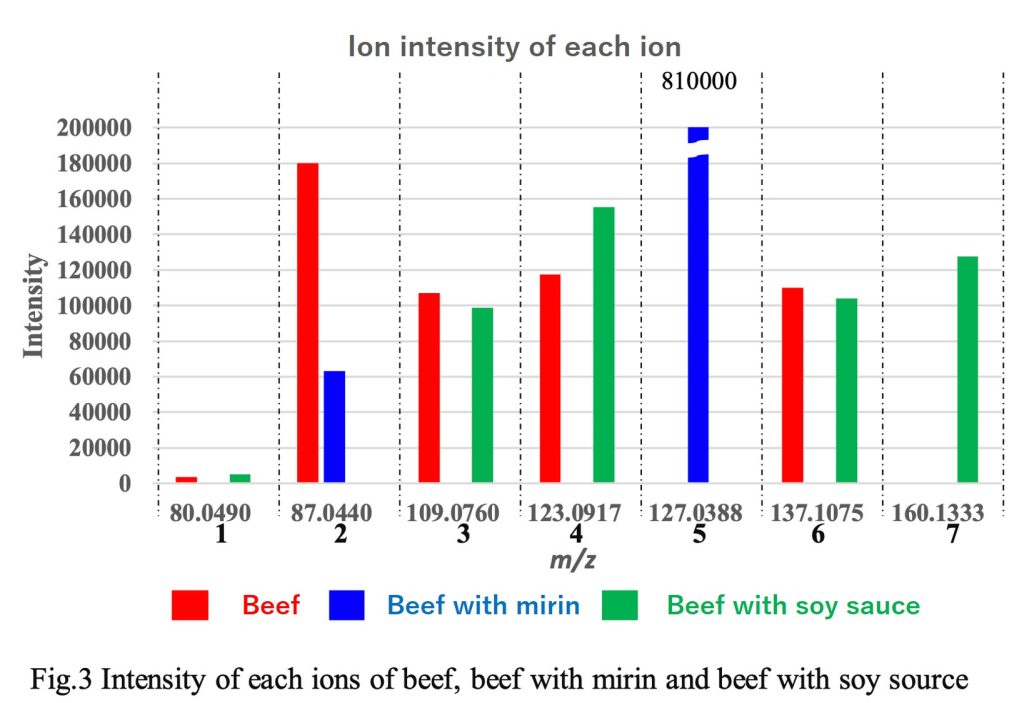Maillard Flavor of Beef
Purpose
A beef Maillard flavor analysis was performed using a time-of-flight mass spectrometer equipped with a ChemZo ion source.
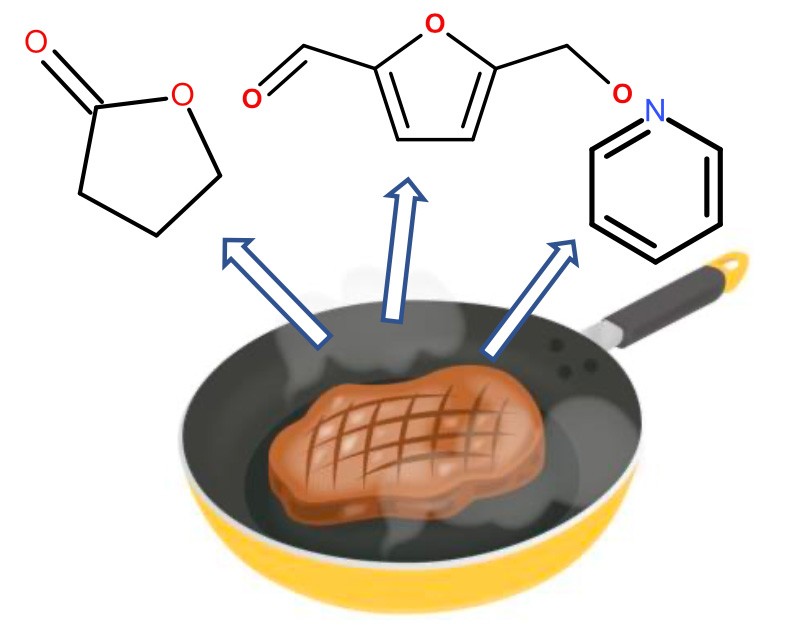
Methods
| Ion source | ChemZo (BioChromato) |
| Mass Spectrometer | compact QTOF (Bruker) |
| Measurement Method | Aromatic components released from 30g of beef cooked on a 180°C hot plate for 1 minute were introduced into the mass spectrometer via a tube. Additionally, the aromatic components were compared in the presence of mirin or soy sauce. |
| Data Processing | Aromatic components were extracted from the mass spectra using the Spectra Scope and Data Analysis software. |
Results
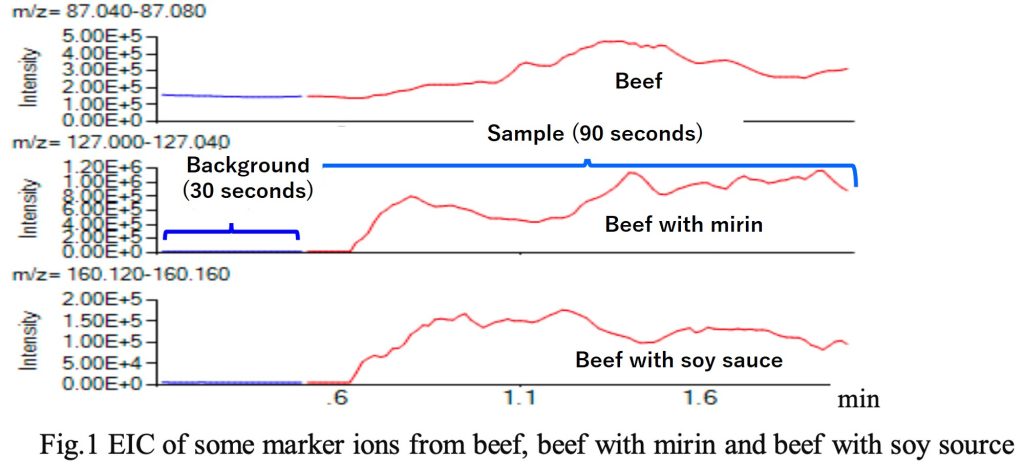
Maillard flavors, which are formed by the reaction of amino acids and sugars during heating, contain a variety of aromatic components, including pyrazines with fruit and vegetable-like scents, and furanones and furanthiols with fruity aromas.
In this study, we attempted to detect Maillard flavors by analyzing the volatile components released when beef was grilled. Additionally, we investigated the differences in Maillard flavors when mirin or soy sauce was applied.
The EIC of representative markers analyzed using SpectraScope is shown in Fig. 1. SpectraScope calculates the change in ion intensity as a ratio, enabling the search for markers. Ions with a large ratio indicate significant changes, suggesting that such markers generated by heating can be considered potential Maillard flavor compounds. The compound names identified using a fragrance component database are shown in Table 1. However, identification using standards (MS, MSMS measurements) was not performed.
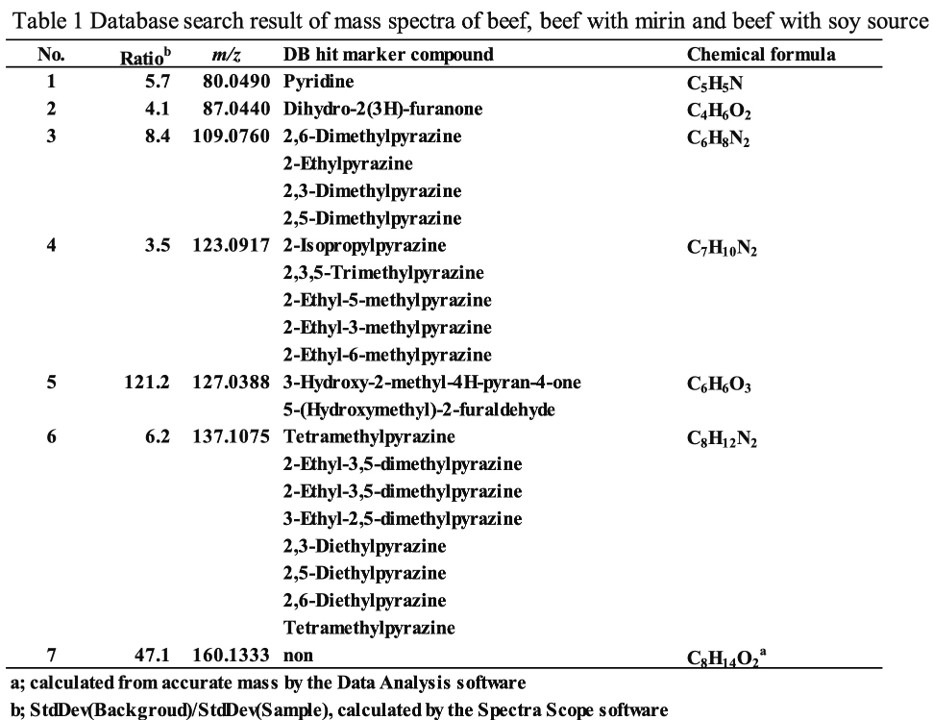
Fig. 2 shows the averaged mass spectrum (90 seconds) of the volatile components generated immediately after grilling. The numbers 1–7 for each ion correspond to the No. in Table 1. Maillard flavor compounds with similar intensities were detected from beef, except for pyridine, with five components being identified. On the other hand, when mirin or soy sauce was added to the beef, the Maillard flavors derived from the beef tended to be suppressed, and characteristic ions m/z 127.0388 for mirin and m/z 160.1333 for soy sauce were detected.
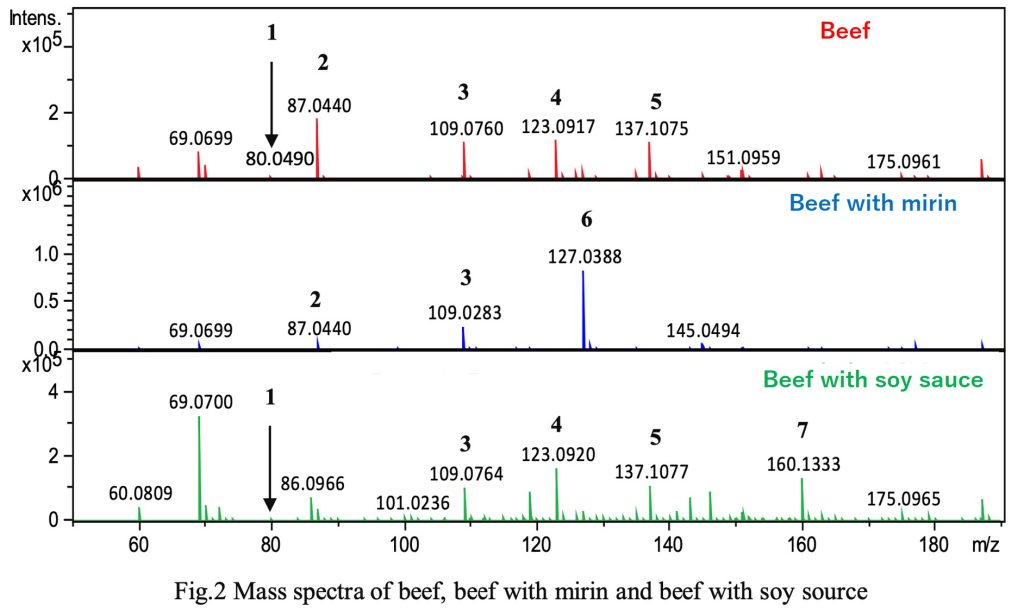
Fig. 3 shows a bar graph comparing the ion intensities. The beef with soy sauce samples exhibited similar trends, while beef with mirin showed a distinct difference, with the ion intensity of m/z 127.0388 being extremely high. These results suggest that seasonings such as mirin and soy sauce can either lead to the similar formation of Maillard flavors derived from beef or suppress their formation. Additionally, since ions at m/z 127.0388 and m/z 160.1333 were also detected when heated independently, it is inferred that these ions are derived from Maillard flavors associated with mirin and soy sauce, rather than from a synergistic effect with beef.
This experimental method has the potential to be an effective analytical approach for understanding the Maillard flavors derived from beef and other sources, as well as the effects of seasonings.
